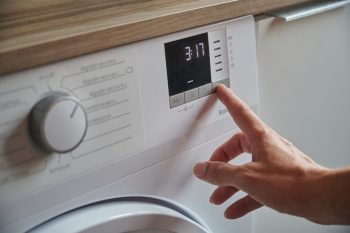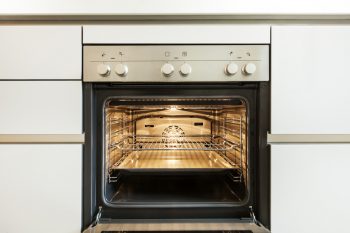
Starting a gas pressure washer might seem like a daunting task, especially if you’re a beginner. However, with the right knowledge and guidance, you can easily master this essential home maintenance skill. This comprehensive guide will walk you through everything you need to know about starting a gas pressure washer, from understanding its basic components to resolving common issues that might prevent it from starting.
To start a gas pressure washer, first ensure it’s on a flat surface and the water strainer is clear. Connect a garden hose to the washer and your water supply. Attach the high-pressure hose, gun assembly, and appropriate nozzle. Turn on the water supply and release excess air by squeezing the trigger on the gun. Check the oil and fuel levels, adjust the choke and throttle, and pull the starter cord or use the electric start to start the engine. Always refer to your owner’s manual for specific instructions.
Understanding the Basics of a Gas Pressure Washer
A gas pressure washer is a powerful tool that uses a gas engine to generate high pressure for heavy-duty cleaning tasks. It consists of several key components, including an inlet water supply system, a water filter, a high-pressure pump, an unloader or regulator valve, a high-pressure hose, a trigger gun, and a nozzle. These components work together to deliver high-pressure water that can effectively clean various surfaces, such as driveways, patios, decks, and vehicles.
Step-by-step Guide to Starting a Gas Pressure Washer
Starting a gas pressure washer involves a series of steps. Here’s a step-by-step guide to help you through the process:
- Position the pressure washer on a flat surface and ensure the water strainer is in place and free of debris.
- Connect a garden hose to the washer and the other end to your water supply.
- Attach the high-pressure hose to the water outlet on the pressure washer.
- Connect the gun assembly to the other end of the high-pressure hose.
- Attach the appropriate high-pressure nozzle to the gun and wand assembly.
- Turn on the water supply to fill the pressure washer and hose with water.
- Squeeze the trigger on the gun to release excess air from the system.
- Check the oil and fuel levels in the pressure washer.
- If your pressure washer has a fuel valve, make sure it is turned on.
- Adjust the choke and throttle as specified in your owner’s manual.
- Pull the starter cord or use the electric start button/key (if available) to start the engine.
Remember to always read the owner’s manual for specific instructions related to your pressure washer model.
Safety Precautions When Using a Gas Pressure Washer
Using a gas pressure washer requires certain safety precautions. Always wear protective gear such as goggles, gloves, and closed-toe shoes. Never aim the wand at anyone, and inspect the equipment before use. Make sure all quick-connect hoses are locked, and be prepared to handle the force when operating the equipment. Always use the equipment in well-ventilated areas to avoid carbon monoxide poisoning.
Common Issues and Troubleshooting
Sometimes, you might encounter issues when starting a gas pressure washer. These could be due to stale fuel, a dirty or clogged carburetor, a damaged or worn spark plug, a clogged air filter, a blocked inlet water filter, or a faulty unloader valve. Most of these issues can be resolved by cleaning or replacing the affected parts.
Tips for Longevity and Optimum Performance
Regular maintenance is key to ensuring the longevity and optimum performance of your gas pressure washer. This includes checking and replacing the oil, cleaning the air filter, inspecting and replacing the spark plug, and cleaning the carburetor as needed. Always use fresh gasoline and store the pressure washer properly when not in use.
In conclusion, starting a gas pressure washer doesn’t have to be a challenging task. With the right knowledge and a little practice, you can easily master this skill. Remember to always follow the manufacturer’s instructions and safety precautions to ensure safe and efficient operation.
Frequently Asked Questions
What type of oil should I use for my gas pressure washer?
The type of oil to use in your gas pressure washer depends on the manufacturer’s recommendations. Generally, SAE 30 is suitable for temperatures above 40°F, while SAE 10W-30 is ideal for varying temperature ranges. Always check your user manual for specific oil requirements.
How often should I perform maintenance on my gas pressure washer?
Regular maintenance is key for the longevity of your gas pressure washer. It is recommended to check the oil level before each use, clean the air filter every three months or after 25 hours of use, and replace the spark plug annually. However, these intervals may vary based on your pressure washer model and frequency of use, so always refer to your user manual.
What should I do if my pressure washer’s pump is not producing enough pressure?
If your gas pressure washer’s pump is not producing enough pressure, it might be due to a clogged nozzle, an improperly set unloader valve, or a worn-out pump. You can try cleaning the nozzle, adjusting the unloader valve according to your user manual, or if these don’t work, consider replacing the pump.
Can I use any type of detergent with my gas pressure washer?
Not all detergents are suitable for use with gas pressure washers. It’s important to use only detergents designed for pressure washers to avoid damaging the machine or the surfaces you’re cleaning. Always check the manufacturer’s instructions before using any detergent.
How should I store my gas pressure washer when not in use?
When storing your gas pressure washer, ensure it’s in a cool, dry place and away from direct sunlight. Drain any remaining fuel from the tank, and disconnect the high-pressure hose and gun assembly. Also, consider using a pump protector to prevent the pump from freezing or corroding.












